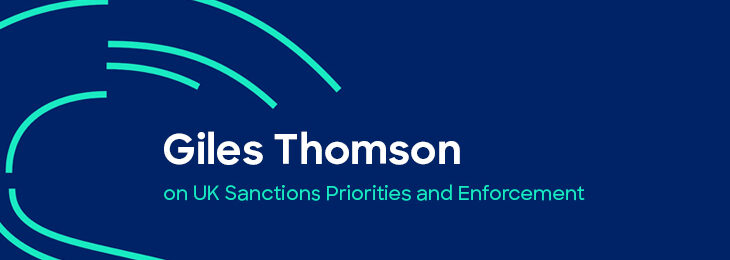
I think many people can relate when I say how much I love and miss my grandmother. My grandfather passed when I was a toddler but our family spent a lot of time with my grandmother. I was fortunate to have had five generations alive until my early 20s but unfortunately, our family witnessed our great-grandmother suffer from Alzheimer’s. I no longer have any of my grandparents in my life but I treasure the time I had with them.
You may wonder what my family memories have to do with money laundering. I have been in the banking industry for over 30 years and since December 2001, I have monitored financial crimes. Currently I hold the position of Bank Secrecy Act (BSA) officer. The primary function of a BSA officer or anti-money laundering (AML) professional is to monitor accounts for various forms of financial crimes ranging from fraud and tax evasion to elder financial abuse. Financial exploitation is a fast-growing, yet unfortunate form of abuse on the elderly and disabled. In the state of Illinois, it is deemed financial abuse when it involves individuals aged 60 and above and disabled individuals between the ages of 18 and 59. Abuse can range from physical, financial, willful deprivation, fraud and even sexual abuse. According to the World Health Organization,1 it is projected that the proportion of the world’s population aged 60 years and older will nearly double from 900 million in 2015 to two billion in 2050. With an increase in the population of elders, financial exploitation to the elderly will only continue to rise.
Abuse comes in many forms, as does the perpetrator. Financial exploitation commonly involves trusted persons like family members but could also be perpetrated by a stranger, healthcare provider, neighbor or close friend. The elderly and disabled are often targeted for financial abuse for many reasons. They may be dependent on others due to a mental or physical disability, have predictable patterns, loneliness or social isolation. Oftentimes, the victim is ashamed or intimidated and does not report the incident so the abuse continues or goes unnoticed. According to the National Adult Protective Services Association (NAPSA),2 the rate of financial exploitation is extremely high, with one in 20 older adults indicating some form of financial mistreatment.
This is not a victimless crime. These victims are ashamed and worried that by reporting the incident, their loved ones will think they are no longer able to handle their own financial affairs. Imagine what it feels like to lose one’s independence and have to be economically, physically or emotionally dependent on others. This vulnerability opens the door to potential abuse.
As a BSA officer, I come across elder financial abuse more often than I care to admit and it is not easy for me. I go through a series of emotions: sadness, anger, disgust and even feelings of violation for the victim. I realized that monitoring activity within the bank was just not enough—I had to do more. AML professionals and bank staff all receive training, so why not the public? I began educating the customers of my financial institution, after hours at a branch location. Later, this led to expanding the invitation to the community residents. Through networking opportunities, I was connected with a local charity organization that advocates for social wellbeing and crisis assistance and a retirement center to present as well.
The feedback from the presentations has been very positive. The key is to share facts, but also real life stories to keep the audience engaged. The first step is getting to know your audience so you know what to focus on and what approach to take. For instance, when I present at a healthcare facility, I take a sensitive approach on the topic of abuse by a caregiver. With every audience, I make sure to explain the purpose of bank regulations and the extensive training the staff receives to ensure the safety of the customer. Banks are often accused of being invasive and “nosey.” Bank tellers are often the first to receive negative feedback because they are on the front line asking these tough questions.
The rate of financial exploitation is extremely
high, with one in 20 older adults indicating
some form of financial mistreatment
Examples of financial mistreatment by a trusted person include the unauthorized use of an ATM card or stealing checks to withdraw funds from an account; taking advantage of joint bank accounts; and convincing the victim to appoint them as their power of attorney to gain control of bank accounts. Strangers take advantage through charity scams, lottery and sweepstakes scams, home improvement scams and telemarketing or phone scams.
Common scams today are the “lottery and sweepstakes scam” and the “grandparent scam.” An example of a “lottery scam” is when an individual receives a letter in the mail that appears to come from a legitimate source that states the receiver has won a large sum of money, but in order to release the funds, a fee must first be paid. The individual, excited about the idea of winning a large sum of cash, responds to the letter and is given specific instructions on where to send the “fee” to release their winnings. To avoid becoming a victim of this type of scam, remember the following, “If you did not purchase or enroll in a sweepstake or lottery, you probably did not win.”
A “grandparent scam” is labeled as such because the scammers portray themselves to be either a grandchild or a law enforcement (LE) officer seeking bail money for a grandchild. Many times the elder questions the voice of the grandchild calling and the excuse is a bad phone connection or an illness. They usually ask that cash be sent via wire transfer or converted into a prepaid card and mailed to an address provided by the scammer. The scammer convinces the elder not to tell anyone to avoid embarrassment for the grandchild. The intent is to convince the elder that the situation is urgent and requires immediate action, not allowing the elder to think through the situation. The best way to avoid falling victim to this type of scam is to take a minute to absorb the call and contact the parent of the child or the child directly to confirm. LE will never ask that bail be paid by wire or in the form of a prepaid card. Payments are usually made at the police station.
The front-line staff at a bank is trained to look for anomalies and transactions that appear to be out of the ordinary for a customer. They are trained to have a conversation with the customer and gently ask a few questions about the transaction. In my experience, asking these tough questions has prevented a loss to the customer on multiple occasions. It is important to educate consumers on why we ask for the source and purpose of funds. This transparency creates trust between the customer and the bank and shows the compassion and loyalty we have to our customers.
I am often asked how the perpetrators obtain personal information on individuals in the first place. There are many ways of obtaining personal information on someone without ever having personal contact with them. Access to the internet puts individuals of all ages at a compromised risk. Personal information is often shared through social media sites and can be obtained by those who are not so honest. This information is gathered over time and can be used by a scammer to give the impression that the request is legitimate. Responding to a survey, entering contests and even completing a warranty card is a way personal information can be shared.
A good practice to follow is to avoid sharing personal information publicly or on social media sites. Not all surveys or warranty cards are scams. Just keep in mind that this information can be sold for legitimate marketing purposes or as part of a scam.
The purpose of an AML professional is to protect the bank, the customer and our country. When it comes to protecting the customer, many of us in the industry take this to heart. This is where my grandmother comes to mind. I try not to make it personal and maintain a professional outlook but it is difficult to witness such a heinous act and not consider what I would do if it were my relative. Unfortunately, banks may not discover the abuse until after the fact when a loss has already incurred. The BSA regulation requires banks to educate their staff on elder financial abuse, how to detect it and report it. Training should not stop there, educating the customer and the community is the key to prevention. We all lead busy lives, but taking the time to talk to a loved one, friend or customer is so important. Stay involved, keep in touch and if you see something, say something. With elder financial abuse being so widespread and becoming one of the biggest issues facing senior citizens, the United Nations designated June 15 as World Elder Abuse Awareness Day (WEAAD). The first WEAAD was observed in 2012.
My advice to the AML professionals is to become involved in the community and be accessible to staff. Training for front-line personnel should not take place once a year or periodically on this topic, it should be year round. We are the experts in our field—so sharing your knowledge can make a difference.
- “Elder Abuse,” World Health Organization, June 8, 2018, https://www.who.int/news-room/fact-sheets/detail/elder-abuse
- “Elder Financial Exploitation,”National Health Protective Services Association, http://www.napsa-now.org/policy-advocacy/exploitation/











Very well written article.